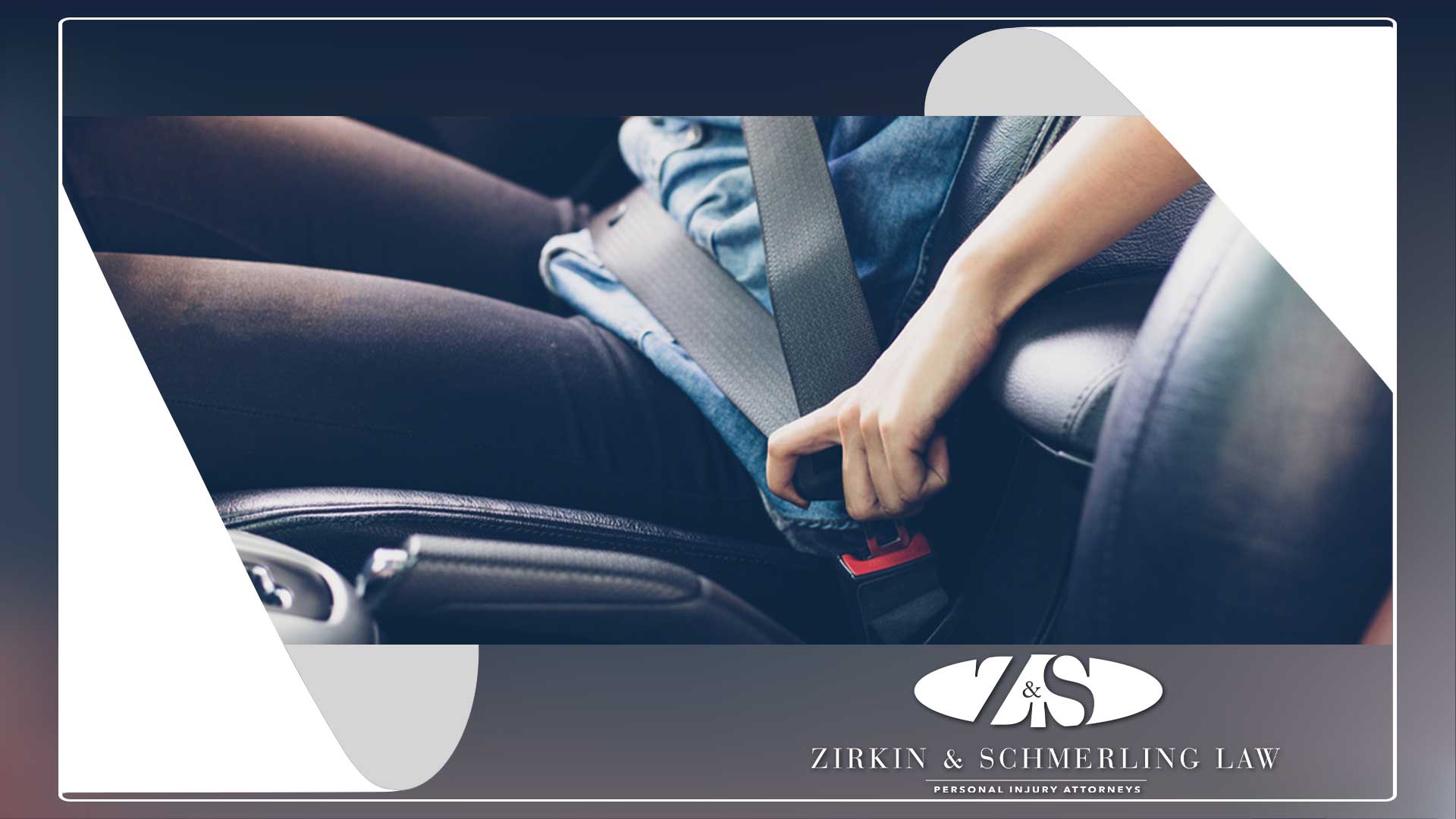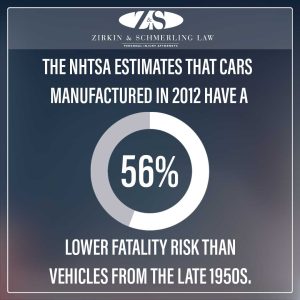
Car accidents are often incredibly serious and traumatic. A seemingly minor mistake behind the wheel can have devastating consequences such as severe or even fatal injuries. While collisions are still a common and unfortunate reality, new car safety features can reduce one’s likelihood of getting into a significant accident.

Through the decades, manufacturers have implemented safety features in cars that have prevented numerous deaths. The National Highway Traffic Safety Administration (NHTSA) estimates that cars manufactured in 2012 have a 56% lower fatality risk than vehicles from the late 1950s. Some of the critical safety features that have become common since the 1950s include airbags, electronic stability control, and backup cameras.
Of course, newer vehicles include many more safety features that can mitigate your risk of suffering a severe crash. Here are some of the most protective and effective vehicle safety features.
Lane-Keep Assists and Departure Warnings
Drifting out of your lane can cause a life-changing accident, and it only takes a moment to accidentally shift into an occupied lane. Fortunately, many new vehicles come with lane-departure warnings and lane-keep assist technology to reduce this risk.
Lane-departure warnings (LDW) use sensors or cameras to monitor your vehicle’s position within a lane. If you begin to drift into another lane of traffic, the LDW will shine a warning light or make a sound to alert you that you’re exiting your designated lane. Additionally, your vehicle may alert you haptically through a vibration in your driver’s seat or steering wheel.
While lane-departure warnings alert you, lane-keep assist makes automatic corrections to ensure you don’t leave your lane by mistake. This technology can make your ride safer, but it’s far from perfect. Depending on your vehicle, your lane-keep assist may struggle to adjust your vehicle in inclement weather or when you drive on poorly marked or uneven roads.
Regardless of whether or not your car features lane-keep assists or departure warnings, you must always stay alert at the wheel and avoid drifting out of your lane.
Blind-Spot Monitoring
It’s common knowledge that checking your blind spot is essential for avoiding collisions, as side-view mirrors usually have limitations in revealing adjacent vehicles. While it’s important to check your blind spot before merging, taking your eyes off the road ahead is also dangerous.
For that reason, many new vehicles are equipped with blind-spot monitoring. This technology enables you to check your blind spot without taking your eyes off the road ahead.
Blind-spot monitoring utilizes sensors to detect cars residing in this critical area. If a car is in your blind spot when you turn on your blinker, your vehicle will display a warning light or emit a sound informing you of the hazard. Some vehicles feature blind-spot monitoring systems that will even self-correct if you attempt to merge into an adjacent driver, preventing you from crashing.
Like with lane-keep assist and departure warnings, these features are not perfect, so it’s still critical that you practice caution when merging.
Forward-Collision Warning
Forward-collision warning technology can help mitigate your risk of hitting approaching vehicles, objects, or pedestrians. The system utilizes cameras, sensors, and lasers to detect the road ahead and will warn you if you approach a potential hazard too quickly.
How this technology works is through automatic speed and distance calculations. Cars equipped with this feature include front-facing sensors. The sensors calculate the speed of the approaching obstacle in relation to your car’s speed to determine whether you’re on course for a collision. If you’re approaching an obstacle at a dangerous speed, your car will warn you through an audible, visual, or haptic signal.
While this technology alerts drivers of approaching hazards, drivers must react promptly to these warnings to avoid collisions.
Automatic Emergency Braking System
While forward-collision warnings only alert you of approaching obstacles, automatic emergency braking (AEB) can halt your vehicle to prevent an impending crash. This safety feature is invaluable in averting serious accidents.
Like with forward-collision warnings and other car safety features, AEB systems utilize cameras and sensors to assess approaching hazards. If you’re nearing an obstacle, your car will likely first send out a forward-collision warning. If you fail to react, the AEB system will activate your brakes to slow your car or come to a complete stop, preventing the collision.
There are a few different types of AEB systems, including:
- Forward Automatic Emergency Braking: The forward AEB activates when there’s an approaching obstacle in front of your car.
- Automatic Emergency Braking with Pedestrian Detection: This AEB functions similarly to the forward AEB, but it specializes in detecting pedestrians and cyclists.
- Rear Automatic Emergency Braking: The rear AEB works in tandem with rear cross-traffic alerts. This alert detects vehicles and other obstacles while your car is in reverse. Your car will automatically stop if there’s an impending hazard.
- Highway Speed Automatic Emergency Braking: Highway speed AEB systems specialize in detecting obstacles during high speeds. These systems usually feature more advanced sensors so that they can detect cars and other obstacles at farther distances. One important note is that highway speed AEBs will only slow down your vehicle rather than stop it completely.
- City Speed Automatic Emergency Braking: City speed AEB systems are designed for lower speeds, and they specialize in quickly detecting and preventing collisions with cars and obstacles that are in close proximity. For example, if you’re stuck in stop-and-go traffic and are close behind another vehicle, the city speed AEB will prevent your car from bumping into the forward car.
Injured in a Crash? Contact a Personal Injury Attorney
While many modern vehicles come with incredible car safety features, it’s impossible to avoid the risk of a collision entirely. If you’re involved in an accident caused by another driver, you may suffer from many different types of injuries that require costly medical bills and time away from work.
Fortunately, you can file a claim against the liable driver to recover compensation for your medical bills and other damages.
If you were injured in a car crash in Maryland, contact the car accident legal experts at Zirkin & Schmerling Law. We’ll help you recover the money you deserve for your accident. You can schedule a free case consultation with us today by calling 410-753-4611, or you can make your appointment online.
